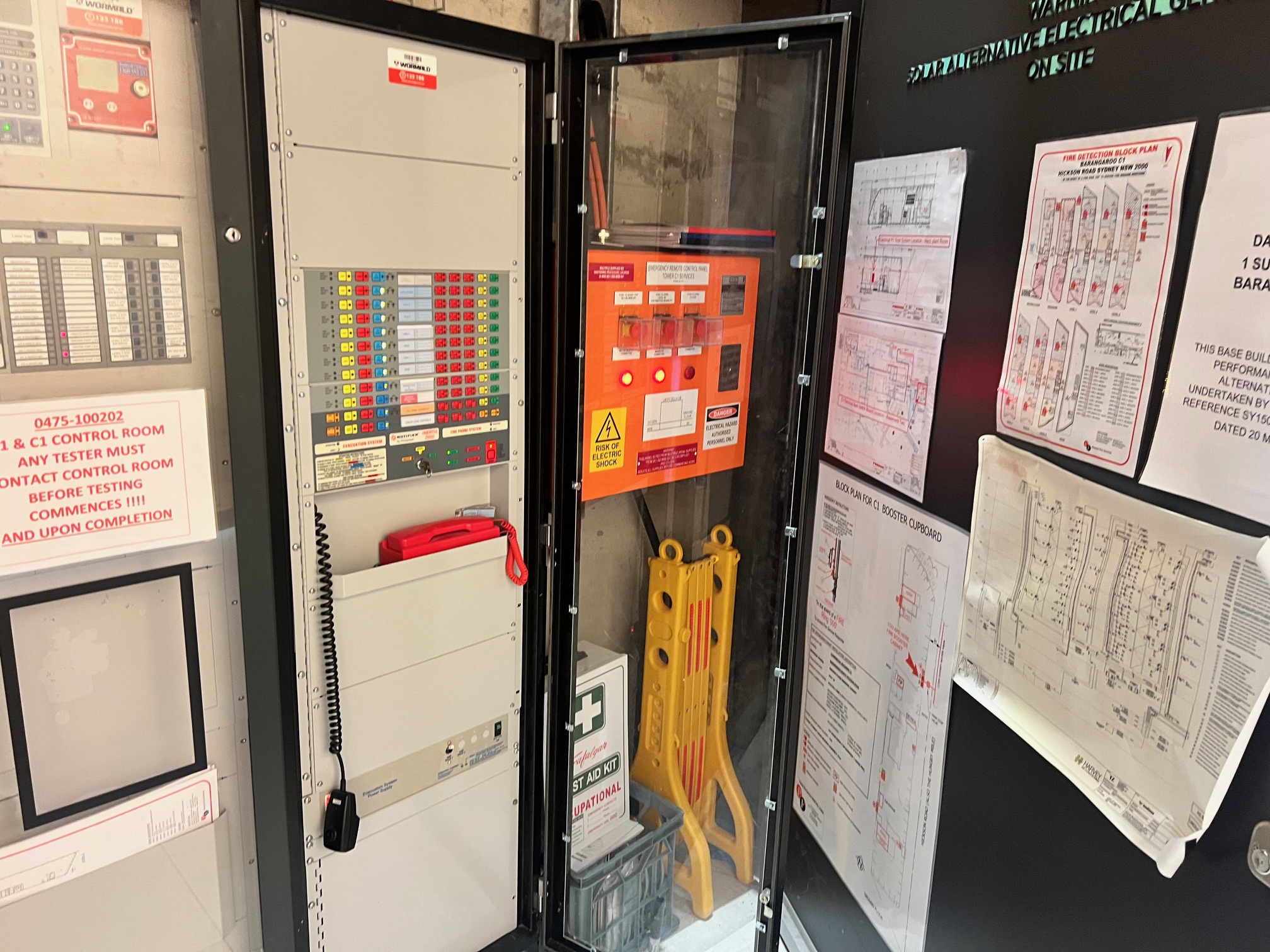
Shelter in place in commercial buildings: understanding a critical part of emergency planning

When people think about emergencies in buildings, they usually think of evacuation – alarms sounding, stairwells filling, wardens guiding people to safety. But sometimes the safest action is the opposite: stay put.
That procedure is known as shelter in place (SiP). It’s one of the least understood but most important parts of modern emergency planning. For wardens and facility managers, knowing when and how to shelter in place can make the difference between exposing people to danger and keeping them protected.
When to shelter in place
Shelter in place is used when danger exists outside the building rather than within it. Instead of moving people towards potential risk, the goal is to keep them sealed in a safe internal zone until the threat passes.
Typical situations include:
- Hazardous materials incidents: A nearby chemical spill or release from transport or industry.
- Smoke or air quality events: From bushfires or industrial fires spreading through an area of a CBD.
- Civil unrest or police operations: Where streets or public areas are unsafe due to a conflicting environment.
- Security or terrorism incidents: When precincts or evacuation routes are compromised.
In these situations, trying to move thousands of people onto city streets can increase exposure and confusion. Shelter in place gives the Emergency Control Organisation (ECO) a controlled alternative – one that prioritises occupant safety and business continuity.

What wardens need to know
Under AS 3745 – 2010: Planning for Emergencies in Facilities, shelter in place is a required component of a facility’s emergency plan. Yet many wardens, especially those new to fire and emergency training, aren’t familiar with how it works.
Emcorp Group’s warden training programs build this knowledge through hands-on drills and scenario testing. Wardens learn to:
- Identify safe internal zones: Such as enclosed rooms with minimal windows and controlled ventilation.
- Restrict unnecessary movement: Like limiting travel vertically between floors or horizontally across the building to reduce risk.
- Seal rooms: By closing fire doors, exposable windows and restricting HVAC systems to prevent contaminated air circulation.
- Maintain communication: Through consistent contact with the Chief Warden and emergency services through established communication pathways.
- Monitor and reassure occupants: By keeping people rationally informed and calm until an all-clear is given.
These steps may sound simple, but in practice, they require coordination, confidence and timing. Wardens need to make fast decisions with potentially incomplete information and that’s why structured, scenario-based training is essential.

Case study: hazardous materials release in Sydney’s CBD
In 2018, a hazardous materials incident occurred near Circular Quay. Multiple high-rise buildings were within the exclusion zone. HAZMAT teams, working with building Chief Wardens, advised against evacuation. Instead, the order was to shelter in place and seal localised facilities.
Companies that had trained ECOs and practiced SiP procedures were able to act quickly. Building management shut down HVAC systems, wardens sealed doors and exposable windows, and staff were instructed to stay put. Movement within each floor was controlled and warden updates were relayed through the Chief Warden to emergency services.
Within two hours, the all-clear was given. No occupants were exposed to the hazard, and several firms were even able to maintain limited business operations during the lockdown. The incident reinforced how preparedness – and trust in the process – keeps people safe.
Integrating SiP into emergency planning
For many organisations, shelter in place procedures are missing or underdeveloped in their emergency documentation. That gap can create significant risk. Under the Work Health and Safety (WHS) Act 2011, employers must ensure safe systems of work, including comprehensive emergency management procedures.
A complete emergency plan should include:
- Evacuation procedures
- Workplace intrusion procedures
- Shelter in place protocols
- Lockdown procedures
- Communication flowcharts
- Roles and responsibilities for all ECO members
- Testing schedules for drills and reviews
Regular scenario testing – including evacuation and non-evacuation exercises – helps wardens understand the triggers for each type of response. A strong emergency plan doesn’t assume that “everyone leaves the building.” It recognises that sometimes the safest move is staying exactly where you are.

Compliance and risk management
Failure to provide shelter in place training exposes organisations to multiple risks:
- Regulatory breaches – non-compliance with AS 3745 – 2010.
- Legal exposure – under WHS legislation if staff are not properly trained.
- Operational disruption – confusion or panic leading to injury or property damage.
- Reputational damage – especially when poor emergency management becomes public.
In high-density workplaces, safety and security risks evolve constantly. From hazardous material transport through CBD corridors to increased protest activities, civil disturbances and security incidents, large buildings must be able to pivot quickly. Compliance isn’t about paperwork — it’s about maintaining the capacity to act effectively under pressure.
Lessons from the field
Through years of delivering fire and emergency training across commercial, aged care, retail, industrial sites and the resources sector, Emcorp Group’s trainers have observed a few key truths about shelter in place:
- People default to evacuation. Most occupants assume leaving is safest. Training corrects that instinct when conditions say otherwise.
- Communication builds confidence. When wardens can explain what’s happening and why, occupants stay calm and cooperative.
- Integration beats isolation. Shelter in place must fit seamlessly within a broader emergency management plan, not sit as an afterthought.
- Rehearsal is everything. Scenario testing turns procedures into reflex – a key part of the training methodology.
These insights underline why warden training can’t focus solely on evacuation. True readiness means knowing when not to move.
Building confidence through training
At Emcorp Group, shelter in place is a standard part of our comprehensive warden and emergency management programs. We design training that reflects the realities of today’s commercial environments – large workforces, high occupancy, complex systems and public exposure.
Our programs cover:
- Warden and ECO training
- Evacuation and shelter in place drills
- First aid and CPR training
- Emergency planning and risk management
- Compliance with AS 3745, AS 4083 and AS 1851
- Scenario testing for crisis management and business continuity
Training isn’t about creating perfect conditions – it’s about preparing people to respond when conditions are far from perfect over an undetermined timeframe.
A final thought: safety doesn’t always mean moving
Evacuation might be the image most people associate with emergencies, but staying put is sometimes the smarter move. Shelter in place procedures protect people from external hazards, maintain order and buy precious time until it’s safe to move again.
When wardens are trained to recognise those moments and act decisively, they keep more than just compliance intact – they keep people safe and businesses resilient.
Every organisation is different. Let’s build a strategy that fits yours.
From site-based training to enterprise-wide planning, we tailor our approach to your needs.
